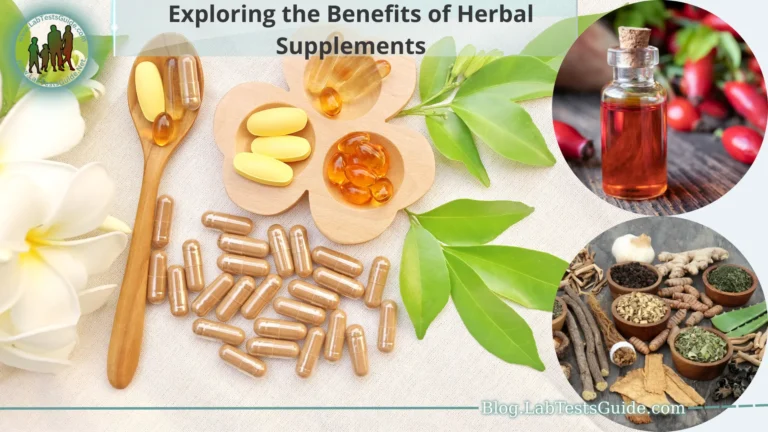Food poisoning is a prevalent and potentially dangerous health concern that can affect anyone, regardless of age or lifestyle. It occurs when consuming contaminated food or beverages containing harmful pathogens or toxins. The consequences of food poisoning can range from mild discomfort to severe illness, and in some cases, it can be life-threatening. Therefore, understanding how to protect yourself from food poisoning is crucial for maintaining your well-being and that of your loved ones.

This comprehensive guide aims to equip you with essential knowledge and practical tips on how to prevent food poisoning. We will explore the common causes of foodborne illnesses, high-risk foods to be cautious of, and the importance of practicing good hygiene in food handling. Additionally, you will learn about proper food storage, safe cooking techniques, and how to interpret expiry dates and labels to make informed choices. Whether you are preparing meals at home, dining out, or traveling, following these guidelines will help you reduce the risk of food poisoning and enjoy a safe and healthy culinary experience.
What is Food Poisoning?
- Food poisoning is a foodborne illness caused by consuming contaminated or spoiled food.
- It occurs when harmful pathogens, such as bacteria, viruses, parasites, or toxins, are present in the food.
- Contamination can happen at any stage, from production to preparation and consumption.
- The symptoms of food poisoning can vary but commonly include nausea, vomiting, diarrhea, abdominal pain, and fever.
- The onset of symptoms may occur within a few hours to several days after eating the contaminated food.
- Food poisoning can affect anyone, but certain groups, such as young children, elderly individuals, pregnant women, and people with weakened immune systems, are more susceptible to severe complications.
- Common sources of food poisoning include raw or undercooked meat, poultry, eggs, unpasteurized dairy products, and contaminated fruits and vegetables.
- Proper food handling, storage, and cooking practices are essential in preventing food poisoning and ensuring food safety.
How to Safely Handle and Prepare Food to Prevent Food Poisoning:
- Wash Your Hands: Thoroughly wash your hands with soap and water for at least 20 seconds before and after handling food, especially after touching raw meat, poultry, fish, or eggs.
- Keep Separate Cutting Boards: Use separate cutting boards for raw meat, poultry, seafood, and vegetables to avoid cross-contamination. Wash cutting boards, utensils, and countertops with hot, soapy water after each use.
- Cook Food to Safe Temperatures: Use a food thermometer to ensure that meat, poultry, fish, and egg dishes are cooked to their recommended internal temperatures. This kills harmful bacteria present in the food.
- Store Food Properly: Refrigerate perishable foods promptly to prevent bacterial growth. Keep the refrigerator temperature at 40°F (4°C) or below and the freezer at 0°F (-18°C) or below.
- Thaw Safely: Thaw frozen food in the refrigerator, in cold water, or in the microwave, but never at room temperature to avoid bacterial growth.
- Avoid Raw and Undercooked Foods: Avoid consuming raw or undercooked eggs, meat, poultry, seafood, and unpasteurized dairy products, as they can contain harmful bacteria.
- Don’t Leave Food at Room Temperature: Do not leave perishable food items, such as meat, poultry, dairy, or cooked dishes, at room temperature for more than two hours (one hour if the temperature is above 90°F/32°C).
- Practice Safe Food Preparation: Wash fruits and vegetables under running water before eating, cutting, or cooking them. Avoid using damaged or bruised produce.
- Be Mindful of High-Risk Groups: If you are preparing food for young children, elderly individuals, pregnant women, or people with weakened immune systems, take extra precautions to ensure their safety.
- Beware of Cross-Contamination: Keep raw meat, poultry, and seafood away from other foods in your grocery cart, grocery bags, and refrigerator to prevent cross-contamination.
- Follow Food Recalls: Stay informed about food recalls and food safety alerts and avoid consuming products that have been recalled due to contamination concerns.
- Practice Personal Hygiene: Maintain personal hygiene by keeping your hair tied back, wearing clean aprons, and avoiding touching your face while preparing food.
Proper Food Storage:
Refrigerator Storage:
- Set the refrigerator temperature at 40°F (4°C) or below to slow down bacterial growth.
- Store raw meat, poultry, and seafood on the bottom shelf to prevent their juices from dripping onto other foods.
- Use airtight containers or tightly wrapped plastic wrap to store leftovers and cooked foods.
- Keep dairy products, eggs, and ready-to-eat foods in the main refrigerator compartment and not in the refrigerator door, where temperatures fluctuate more.
Freezer Storage:
- Set the freezer temperature at 0°F (-18°C) or below to maintain the quality of frozen foods.
- Package food in moisture-proof, airtight, and freezer-safe containers or freezer bags to prevent freezer burn.
- Label and date frozen items to keep track of their shelf life and rotation.
Raw and Cooked Food Separation:
- Store raw meats, poultry, and seafood separately from cooked foods and ready-to-eat items to prevent cross-contamination.
- Use separate containers or sealable plastic bags for different food types.
Shelf Life Awareness:
- Be aware of the shelf life of various foods and use the “first in, first out” principle, consuming older items before newer ones.
- Discard expired or spoiled food promptly to avoid consuming potentially harmful substances.
Food Storage in Pantry or Cupboard:
- Keep dry goods, such as grains, cereals, and canned goods, in a cool, dry place away from direct sunlight.
- Check canned goods for any signs of damage, rust, or bulging before use.
Refrigerating Leftovers:
- Refrigerate leftovers within two hours of cooking to prevent bacterial growth.
- Divide large portions of leftovers into smaller containers to cool more quickly in the refrigerator.
- Thawing Safely: Thaw frozen food in the refrigerator, in cold water, or in the microwave, avoiding the “danger zone” temperatures (40°F to 140°F or 4°C to 60°C) where bacteria can multiply rapidly.
- Avoiding Overstocking: Avoid overfilling the refrigerator and freezer, as proper air circulation is necessary for maintaining appropriate temperatures.
Cooking Safely:
Use Safe Water and Ingredients:
- Start with safe water for cooking and drinking, either from a reliable water source or by using filtered or boiled water.
- Choose fresh and high-quality ingredients from reputable sources to reduce the risk of contamination.
Clean Hands and Surfaces:
- Wash your hands thoroughly with soap and water before handling food and after touching raw meat, poultry, or seafood.
- Keep all cooking surfaces, utensils, and cutting boards clean and sanitized to avoid cross-contamination.
Separate Raw and Cooked Foods:
- Use separate cutting boards and utensils for raw meats, poultry, and seafood to prevent the transfer of harmful bacteria to cooked foods.
- Store raw and cooked foods separately in the refrigerator and ensure they don’t come into contact during storage.
Cook Food to Safe Temperatures:
- Use a food thermometer to check the internal temperature of cooked food. Follow safe cooking temperature guidelines for different types of food, including meat, poultry, fish, and eggs.
- Ensure that ground meats reach a minimum internal temperature of 160°F (71°C) and poultry reaches 165°F (74°C) to kill harmful bacteria.
- Avoid Partial Cooking: Do not partially cook food and then save it for later. Cooked food should be served immediately or rapidly cooled and refrigerated.
Use Safe Cooking Methods:
- Thoroughly cook foods that are prone to contamination, such as eggs and ground meats.
- Boil liquids (e.g., soups, sauces) to ensure they reach a safe temperature for consumption.
- Reheat Food Properly: When reheating leftovers, ensure they reach an internal temperature of 165°F (74°C) to eliminate any bacteria that might have grown during storage.
Understanding Expiry Dates and Labels:
Expiry Date vs. Best Before Date:
- Expiry Date: This date indicates the last day a product should be consumed for safety reasons. After this date, the product may pose health risks and should not be used.
- Best Before Date: This date refers to the period during which the product is expected to be at its best quality in terms of taste, texture, and nutritional value. It is not a safety-related date, and the product may still be safe to consume after this date, although its quality may have declined.
- Use-By Date: The Use-By Date is another term for the expiry date and is commonly used for perishable foods like dairy products, meat, and poultry. After this date, the food may no longer be safe to eat.
- Sell-By Date: The Sell-By Date is mainly for retailers to manage their inventory. It informs them when the product should be taken off the shelves. Consumers can still purchase and use the product safely after this date if stored and handled properly.
- Display Until Date: The Display Until Date is a guideline for the retailer and does not have any specific meaning for consumers. It helps the store manage stock rotation and is not related to food safety.
- Pack Date or Production Date: This date indicates when the product was manufactured or packaged. It is helpful for tracking the product’s freshness and quality.
Reading Food Labels:
- Check for allergen information if you have any food allergies or sensitivities.
- Look for storage instructions to ensure you store the product correctly after opening.
- Pay attention to any specific handling or cooking instructions to ensure safe preparation.
Importance of Following Dates and Labels:
- Using products before their expiry or best before dates ensures their safety and optimal quality.
- Properly storing products according to their labels can extend their shelf life and maintain their freshness.
- When in Doubt, Throw it Out: If a product looks or smells unusual, has damaged packaging, or is past its expiry or best before date, it’s best to discard it to avoid potential health risks.
Eating Out and Travelling:
Here are some tips to ensure safe eating while dining out and traveling.
Choose Reputable Establishments:
- Opt for restaurants and food vendors with good hygiene practices and high cleanliness standards.
- Check online reviews and ratings to gauge the reputation of the establishment.
Observe Food Handling:
- Look for proper food handling practices, such as staff wearing gloves and using tongs or utensils when serving food.
- Ensure that the food is kept at the right temperatures, either hot or cold, to prevent bacterial growth.
Order Cooked Foods Thoroughly:
- When ordering meat, poultry, seafood, or eggs, request that they be cooked thoroughly to their recommended safe temperatures.
- Avoid consuming raw or undercooked dishes, especially if you are unsure of the establishment’s food safety practices.
Avoid High-Risk Foods:
- Be cautious with certain high-risk foods, such as raw or undercooked shellfish, sushi, unpasteurized dairy products, and raw eggs.
- Opt for well-cooked and pasteurized alternatives.
Be Mindful of Water and Ice:
- In areas with questionable water quality, avoid drinking tap water and consuming ice made from tap water.
- Stick to bottled water or beverages served without ice.
- Wash Fruits and Vegetables: If you consume raw fruits and vegetables while traveling, wash them thoroughly under running water before eating.
Be Cautious with Street Food:
- Street food can be delicious, but it may also pose food safety risks.
- Choose vendors with high customer turnover to ensure freshness, and observe their food handling practices before making a purchase.
Store and Handle Leftovers Properly:
- If you have leftovers from a meal while traveling, store them safely in a refrigerator or cooler as soon as possible.
- Reheat leftovers thoroughly before consuming.
- Carry Hand Sanitizer: While traveling, carry alcohol-based hand sanitizer to clean your hands before eating, especially when access to soap and water is limited.
- Be Prepared for Emergencies: Familiarize yourself with local emergency numbers and healthcare facilities in case of foodborne illness symptoms.
Avoiding High-Risk Situations:
Here are some key points to help you steer clear of potential hazards.
Buffets and Salad Bars:
- Be cautious at buffet and salad bar settings where food is exposed to the open air for extended periods.
- Choose food items from freshly replenished trays, and avoid items that have been sitting out for too long.
- Reheating Food Safely: When reheating leftovers, ensure they reach an internal temperature of 165°F (74°C) to kill any bacteria that may have multiplied during storage.
Handling Take-Out and Delivery:
- Consume take-out or delivered food promptly after receiving it, especially if it contains perishable items like meat, poultry, or seafood.
- Reheat delivered foods to ensure they are thoroughly cooked.
Picnics and Outdoor Dining:
- Keep perishable food items in a cooler with ice or ice packs to maintain their safety during outdoor gatherings.
- Avoid leaving food exposed to the sun or heat for an extended period.
Food from Street Vendors:
- Be cautious when purchasing food from street vendors, especially if it involves raw or undercooked ingredients.
- Observe the vendor’s food handling practices and opt for freshly prepared items.
Unpasteurized Products:
- Avoid consuming unpasteurized dairy products, as they may contain harmful bacteria.
- Choose pasteurized alternatives to reduce the risk of foodborne illnesses.
Raw Seafood and Shellfish:
- If you enjoy raw seafood or shellfish, ensure it is from a reputable source known for safe handling practices.
- Avoid consuming raw seafood in areas where water quality and sanitation standards are questionable.
- Homemade Preserved or Fermented Foods: Exercise caution when consuming homemade preserved or fermented foods, as improper preparation can lead to contamination.
- Sharing Utensils or Plates:
- Avoid sharing utensils, plates, or drinking containers, as it can lead to the transmission of harmful bacteria or viruses.
- Be Mindful of Allergens: If you have food allergies, communicate your allergies to servers or food vendors to avoid cross-contamination.
Dealing with Food Recalls:
Here’s what you should know and do when faced with a food recall.
Stay Informed:
- Stay updated on food recalls through official sources like government health agencies, the Food and Drug Administration (FDA), or the manufacturer’s website.
- Check local news and media outlets for announcements related to food recalls.
Identify the Recalled Product:
- Check the product’s packaging and label to verify if it matches the information provided in the recall notice.
- Look for any batch or lot numbers specified in the recall to determine if your product is affected.
Follow the Instructions:
- Pay attention to the specific instructions provided in the recall notice, such as disposal instructions or return procedures.
- If advised not to consume the product or return it to the store, comply with the recommendation.
Contact the Retailer:
- If you have purchased the recalled product, contact the retailer or store where you bought it to inquire about their return policy.
- Most stores will refund or exchange the recalled product.
Dispose of the Product Safely:
- If returning the product is not an option, dispose of it following the instructions in the recall notice to prevent accidental consumption by others.
- Some recalls may recommend double-bagging the product or using a secure container to prevent animals from accessing it.
Seek Medical Attention if Needed:
- If you have already consumed the recalled product and are experiencing symptoms of foodborne illness, seek medical attention promptly.
- Inform your healthcare provider about the recall, as it may help with diagnosis and treatment.
Report the Issue:
- Report the recalled product to the appropriate authorities or the manufacturer as indicated in the recall notice.
- Reporting helps track the extent of the contamination and aids in preventing further incidents.
- Stay Updated: Continue to follow updates on the recall to be informed about any additional information or actions required.
FAQs:
What is food poisoning, and what are its common symptoms?
Food poisoning is a foodborne illness caused by consuming contaminated or spoiled food. Common symptoms include nausea, vomiting, diarrhea, abdominal pain, and fever.
How can I prevent food poisoning at home?
Practice good hygiene, wash hands frequently, handle raw food carefully, cook food to safe temperatures, and store food properly in the refrigerator or freezer.
What are high-risk foods that I should be cautious about?
High-risk foods include raw or undercooked meat, poultry, seafood, eggs, unpasteurized dairy products, and raw sprouts.
How can I tell if food has gone bad or spoiled?
Look for signs of spoilage, such as an off odor, unusual color, slimy texture, or visible mold growth. Check the expiration or best before date on the packaging.
Are food recalls common, and how do I stay informed about them?
Food recalls can occur occasionally due to safety concerns. Stay informed by regularly checking official sources like government health agencies and the manufacturer’s website.
Can I eat food past its “best before” date?
The “best before” date indicates the period when the product is expected to be at its best quality, but it does not necessarily mean it is unsafe to eat after that date. Use your judgment and inspect the food before consumption.
How do I handle leftovers safely?
Refrigerate leftovers within two hours of cooking, store them in airtight containers, and reheat them thoroughly before consuming.
Is it safe to consume raw fish, such as sushi?
Consuming raw fish, like sushi, carries some risk. Make sure the fish is sourced from a reputable supplier with proper food safety practices.
Can food poisoning affect everyone equally?
While anyone can get food poisoning, certain groups, such as young children, elderly individuals, pregnant women, and people with weakened immune systems, are more susceptible to severe complications.
What should I do if I suspect food poisoning?
If you experience symptoms of food poisoning, such as vomiting, diarrhea, or fever, seek medical attention, especially if the symptoms are severe or persistent.
Conclusion:
In conclusion, prioritizing food safety and taking preventive measures against food poisoning are crucial steps in ensuring the well-being of ourselves and our loved ones. By understanding the risks of foodborne illnesses and practicing proper food handling, storage, and cooking techniques, we can significantly reduce the likelihood of encountering foodborne pathogens. Throughout this guide, we have explored various aspects of food safety, including the identification of high-risk foods, safe food storage practices, the significance of proper cooking temperatures, and the importance of understanding food labels and expiry dates. Additionally, we have discussed the safe handling of food while eating out and traveling, as well as the necessary actions to take during food recalls.






